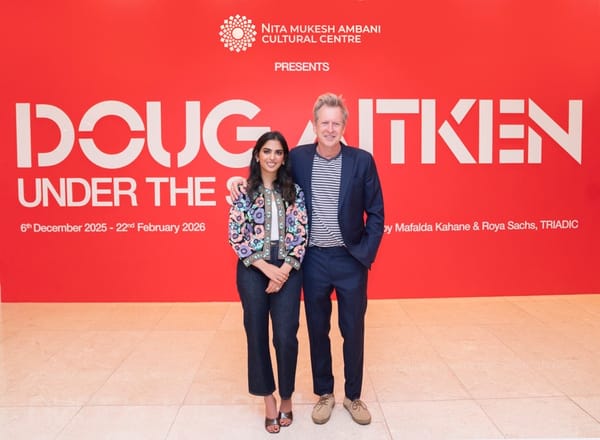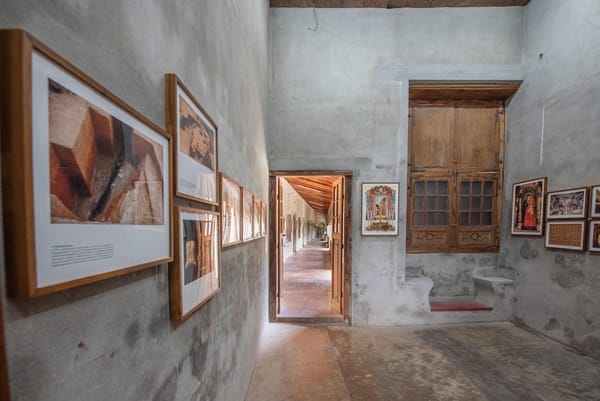Thota Vaikuntam: Redefining the Cultural Gaze—A Journey Through Five Decades of Art
Thota Vaikuntam’s work transcends five decades, blending Telangana's vibrant folk traditions with modern art. In this interview, he reflects on his roots, his artistic journey, and the power of cultural authenticity in today’s art world.
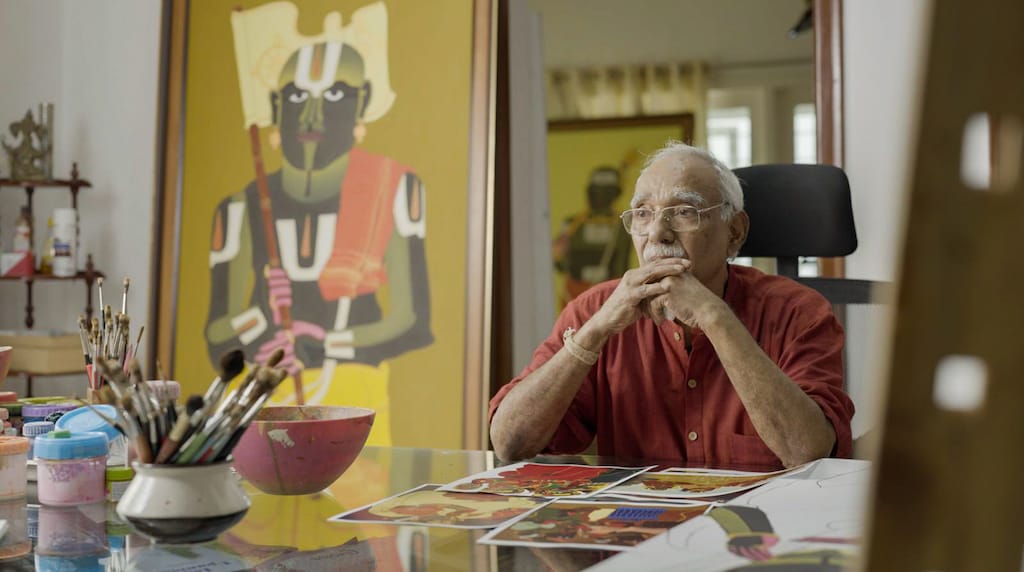
Thota Vaikuntam’s art brings to life the rustic vibrance of Telangana, capturing the essence of rural life with his iconic depictions of local men and women. Known for his bold, theatrical portrayals of human figures, Vaikuntam's work blends the rich cultural traditions of his roots with a modern sensibility that resonates on a global scale. In this conversation, he reflects on his journey from the modest village of Burugupalli to becoming a revered name in Indian art. His powerful images, shaped by his personal experiences and cultural heritage, are not just portraits; they’re narratives that speak to resilience, strength, and a profound sense of belonging.
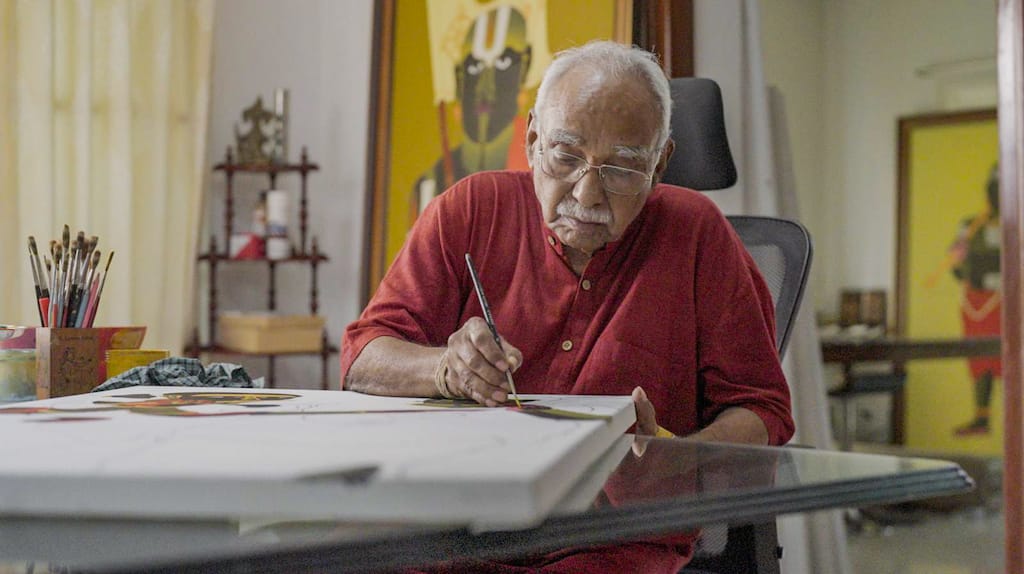
Nikhil Sardana: Your work deeply resonates with the rural life of Telangana. How do you manage to capture the essence of these villages while making your art accessible and relatable to a global audience?
Thota Vaikuntam: Telangana has always been a significant source of inspiration for me. I focus on capturing the vibrant colours of the region and its people, particularly through their daily lives, culture, and attire. My approach is to present these local elements with a contemporary touch, allowing the audience, whether local or global, to connect with the essence of rural Telangana. While the subjects remain rooted in my cultural heritage, their portrayal—through the use of modern techniques and larger canvases—makes the work more relatable and accessible to an international audience.
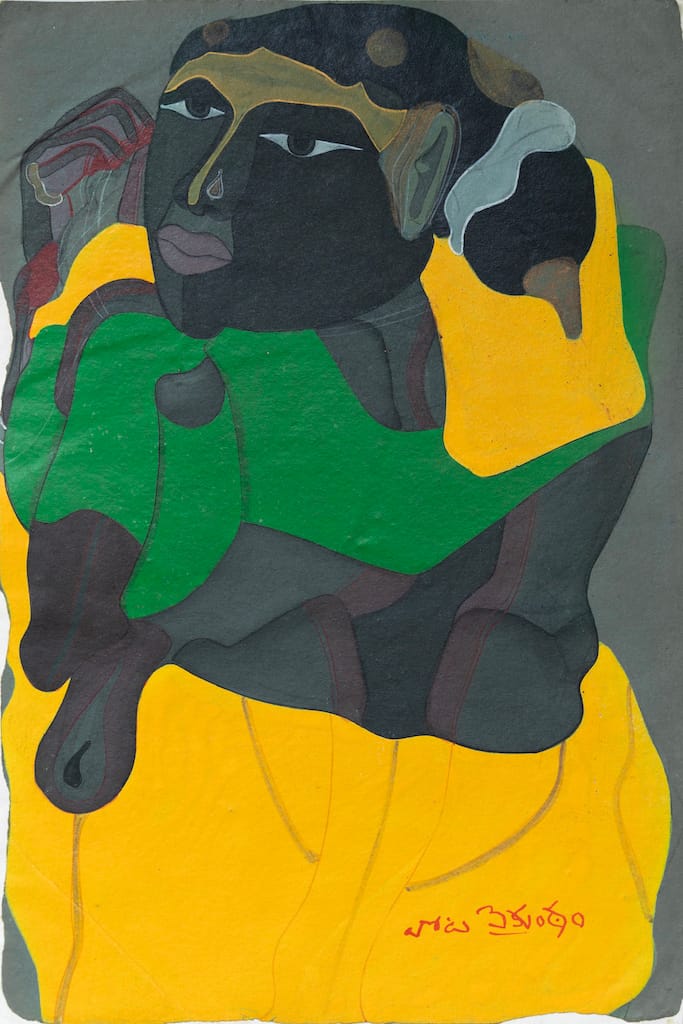
NS: The women in your paintings are iconic, often portrayed with bold, earthy tones and vibrant attire. What stories do these women tell, and how do they reflect the cultural fabric of Telangana?
TV: The women in my paintings are a symbol of strength, power, and nurture. Their vibrant attire, intricate jewellery, and hairdos reflect their beauty, but more importantly, their inner qualities. They represent the spirit of the rural life in Telangana—resilient, grounded, and deeply connected to their cultural roots. Through their postures and expressions, I aim to capture the essence of their everyday lives, which are a celebration of the strength and resilience of women in my community.
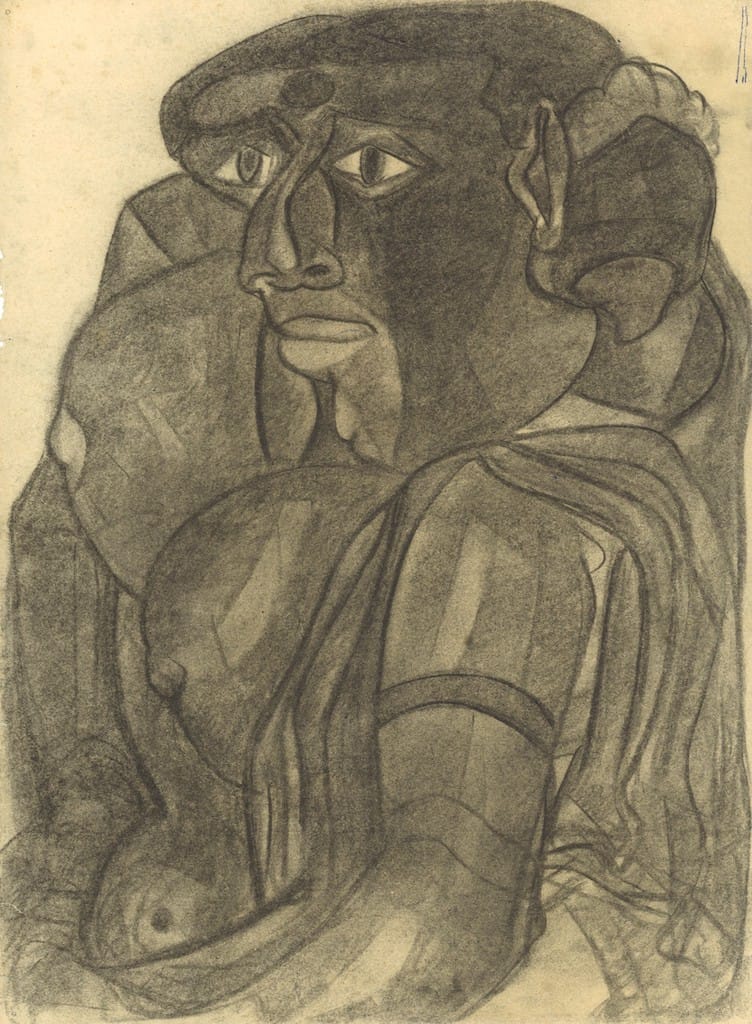
NS: You’ve transitioned from charcoal and conte on paper to vibrant acrylics on canvas. What influenced this shift in medium, and how has it shaped the evolution of your artistic expression?
TV: Initially, I worked with charcoal and conte due to their flexibility, especially during my early days when I could not afford to work with other materials. Charcoal allowed me to explore various tonal values and create detailed drawings. As I progressed, I transitioned to acrylics on canvas, which gave me the freedom to work on larger formats and bring out the vibrancy of the colors that reflect my connection with Telangana. This shift has allowed me to express the rich, vibrant inner world of my memories and experiences more vividly, enabling me to depict the essence of rural Telangana on a grander scale.
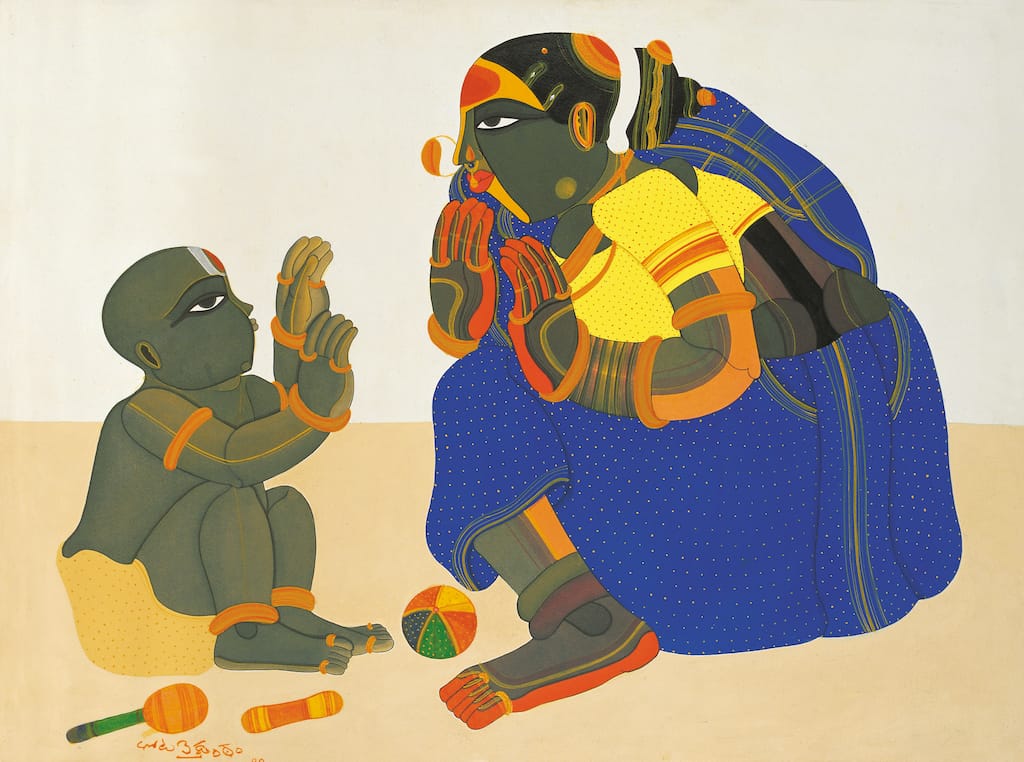
NS: Folk traditions play a significant role in your art. How do you balance preserving traditional elements while incorporating modern artistic techniques?
TV: My art is a celebration of the traditional folk culture of Telangana, but I blend these elements with modernism to keep my work relevant in the contemporary art world. I maintain the traditional essence through my subjects—like the people of Telangana, their clothing, and lifestyle—while modernizing my technique, composition, and medium. By doing so, I am able to preserve my cultural roots while presenting them in a way that resonates with the global art audience.
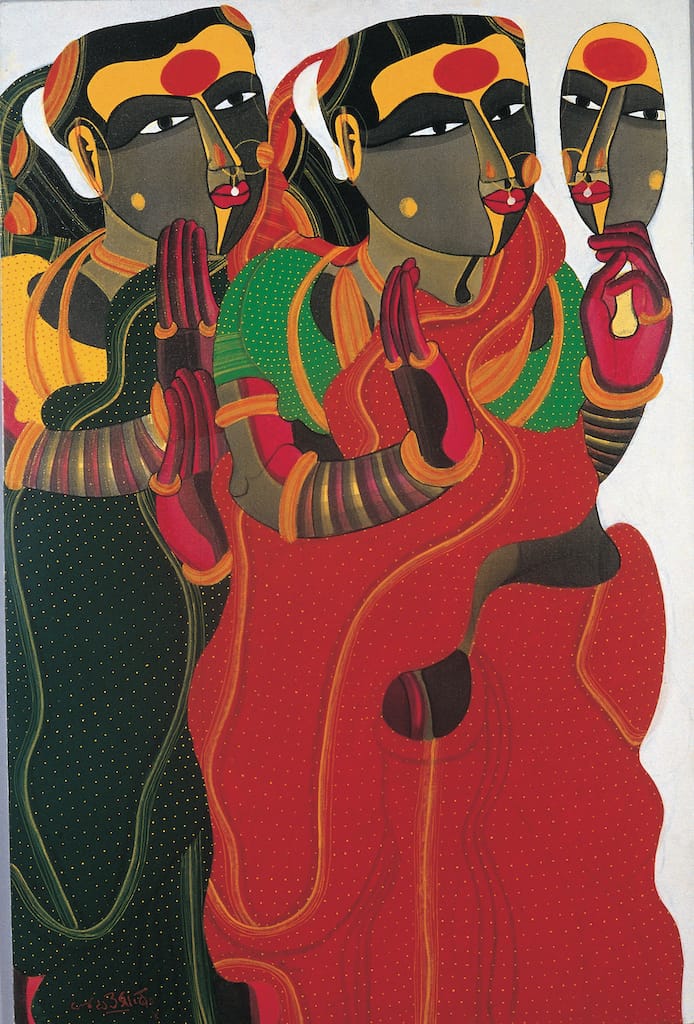
NS: Your paintings often feature large, theatrical forms with a distinct focus on the human figure. What drives your fascination with this form, and how does it relate to your broader artistic philosophy?
TV: My fascination with large, theatrical human forms stems from my desire to magnify the presence of the people I depict. These forms reflect the grandeur of everyday life in rural Telangana, where even the smallest details are significant. Through their size and boldness, I aim to highlight the strength and resilience of these individuals. This approach aligns with my broader philosophy of celebrating the ordinary as extraordinary and elevating the cultural fabric of my community to a global stage.
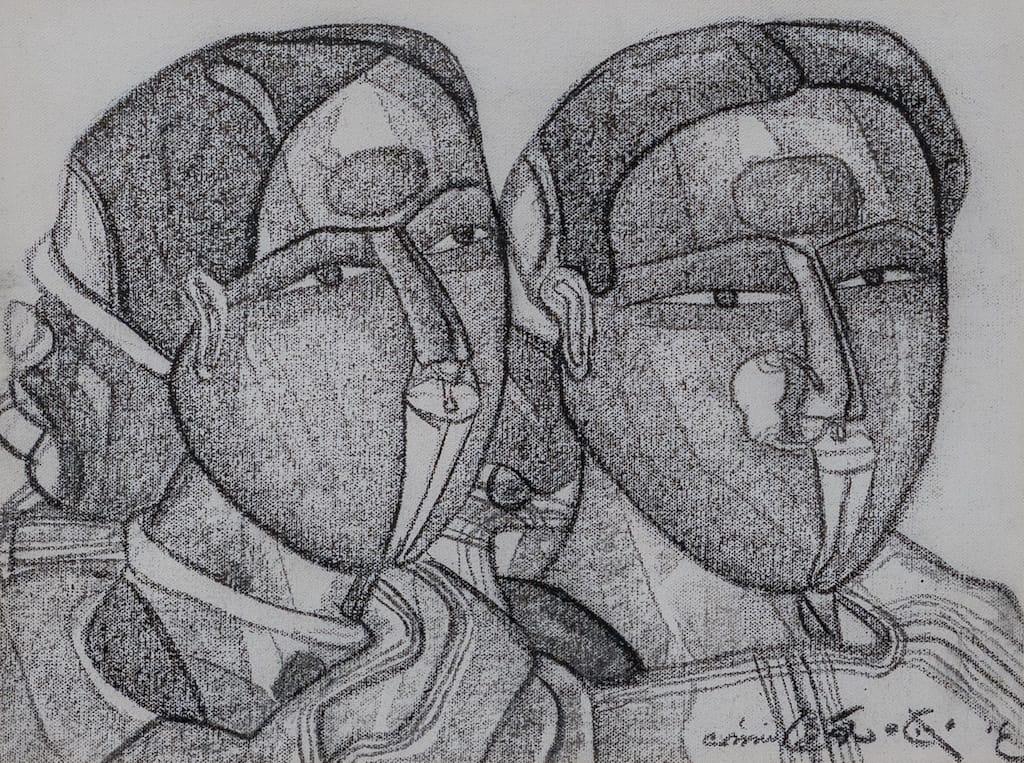
NS: How has your personal experience of rural life in Telangana informed your understanding and redefinition of modernism?
TV: My personal experiences in rural Telangana have deeply shaped my artistic vision. Modernism, for me, is not just about adopting new techniques or ideas from the global art scene but also about redefining these concepts through my cultural lens. I’ve strived to infuse the rich traditions, stories, and vibrancy of rural life into a modern framework, creating a unique blend that stays true to my roots while engaging with the broader contemporary art movement.
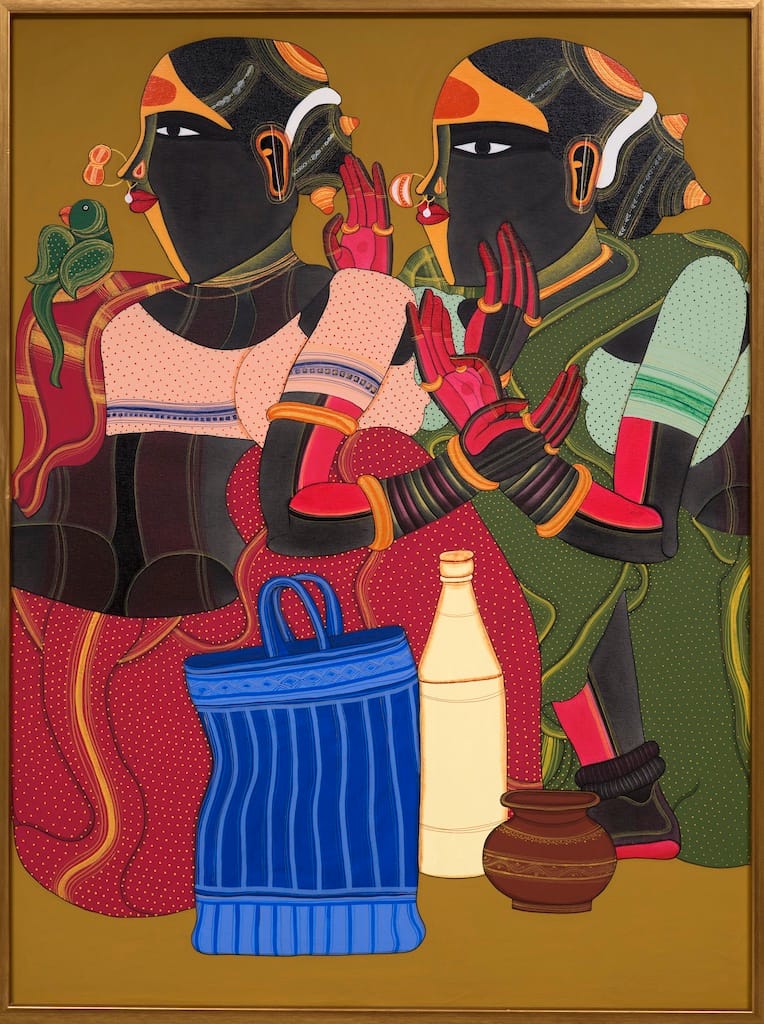
NS: Having begun your career in a humble village in Andhra Pradesh, what challenges did you face as an artist breaking into the contemporary art world? How have those early experiences influenced your approach to art today?
TV: Starting out in a small village with limited resources, I faced numerous challenges, especially in gaining exposure and access to materials. I often had to improvise, working with smaller formats and inexpensive materials like charcoal. These experiences taught me the value of perseverance and creativity, which continue to shape my approach to art today. They also reinforced the importance of staying true to my roots, which has been a constant theme throughout my career.
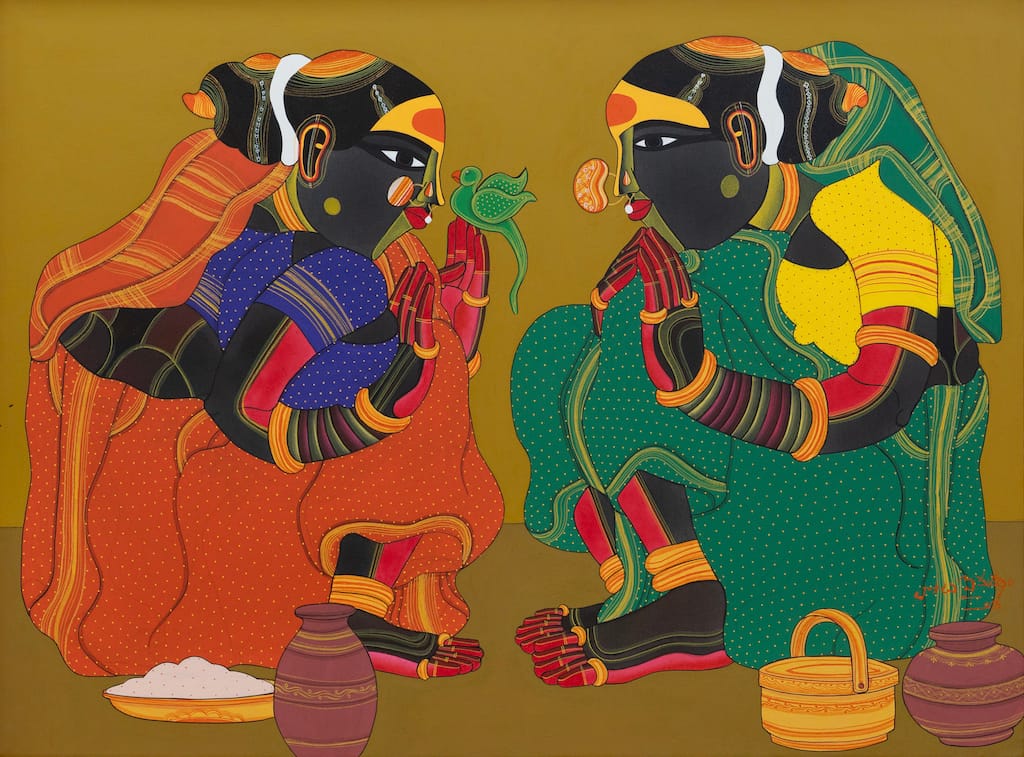
NS: Can you tell us about your experiences working with Art Alive Gallery over the last 25 years and how that partnership has contributed to the evolution and global recognition of your work?
TV: My association with Art Alive Gallery has been a pivotal part of my journey. Over the last 25 years, they have provided a platform that has not only supported my artistic growth but also helped me reach a wider, global audience. The gallery’s dedication to showcasing my work has allowed me to evolve as an artist while staying connected to my roots, and their efforts have significantly contributed to the recognition of my work both in India and internationally.
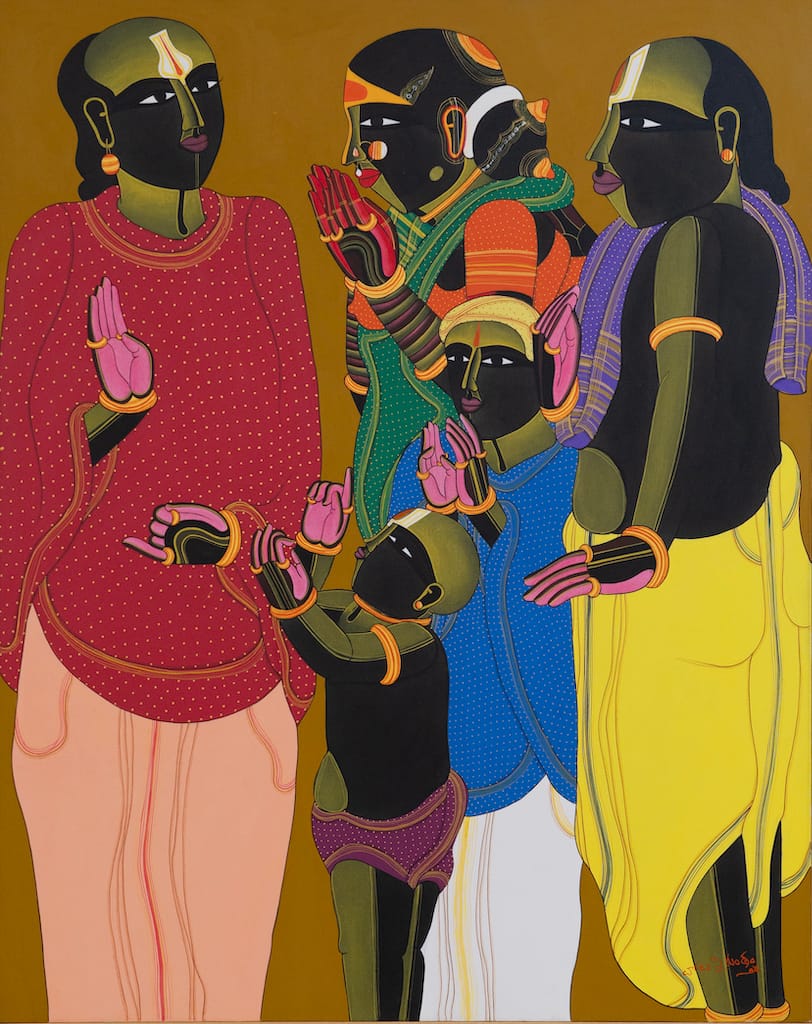
NS: Your latest book, Thota Vaikuntam: Redefining the Cultural Gaze, documents your artistic journey from the 1980s to 2024. What aspects of your work or personal reflections do you think are most vividly captured in this publication, and how does it differ from your previous book, The Man and His Women?
TV: Thota Vaikuntam: Redefining the Cultural Gaze provides a more comprehensive view of my artistic evolution, documenting five decades of work. It captures not only the growth of my style and technique but also my deepening connection with the subjects I portray. Unlike The Man and His Women, which focused primarily on the depiction of women in my work, this publication covers a broader spectrum of my artistic journey, reflecting the full range of themes and ideas I have explored over the years.
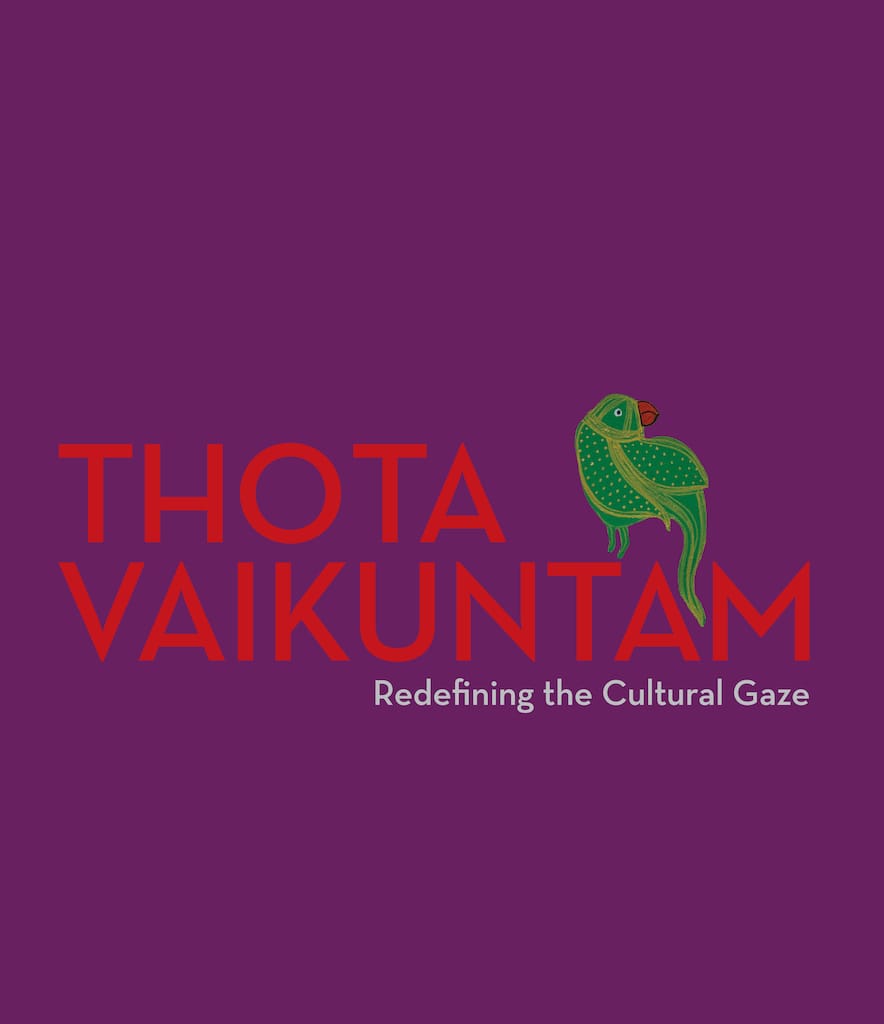
NS: Looking back at the five decades of your career, what advice would you give to young, emerging artists who wish to stay true to their cultural roots while finding their own voice in the global art scene?
TV: My advice to young artists would be to never lose touch with their roots, as these form the foundation of their identity and artistic voice. While it’s important to explore new techniques and ideas, staying true to where you come from will always give your work authenticity and depth. At the same time, engage with the global art scene to evolve and adapt, but do so in a way that enhances and complements your cultural heritage rather than diluting it.
The exhibition, "Redefining the Cultural Gaze," is on view at Art Alive Gallery until November 20, 2024, showcasing Thota Vaikuntam’s journey through works that span from the 1980s to the present day.


